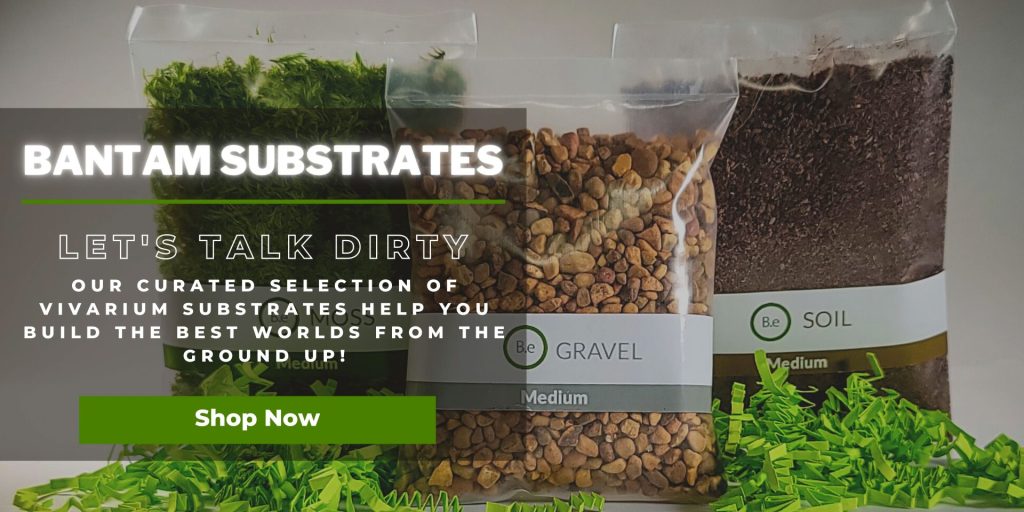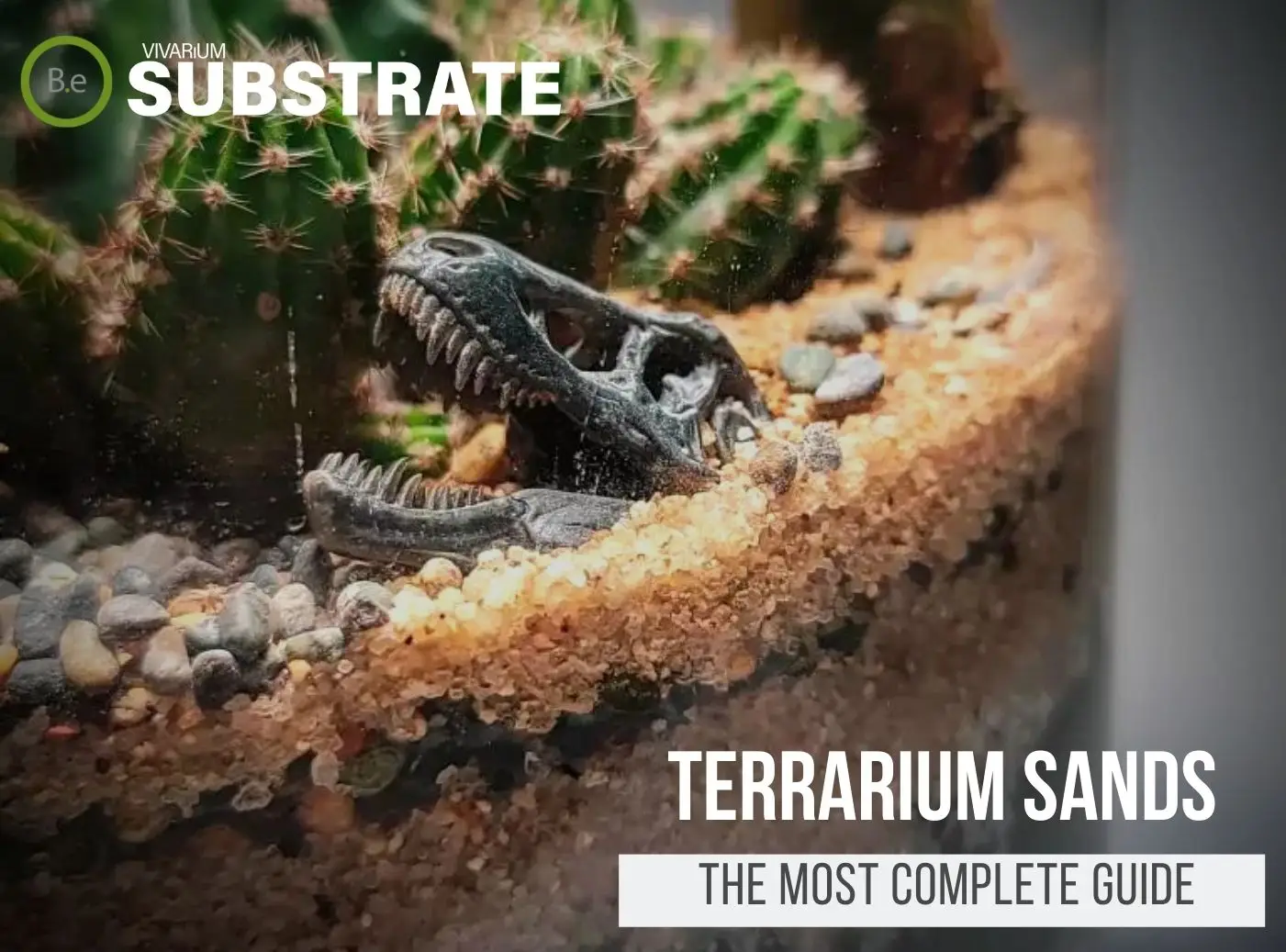Like many conifers (trees that bear cones), Douglas fir trees produce bark that is very useful in horticulture.
When used as a compost, this natural material is proven to have a multitude of uses.
Fir bark is even considered to most, one of the best types of bark to use in tanks that keep inhabitants along with vivarium plants.
This article will provide a full guide on what the byproduct is as well as cover the correct ways to use it within an enclosure.
| Quick Stats: | |
|---|---|
| Scientific Name | Pseudotsuga Menziesii |
| Botanical Name | Douglas Fir Bark |
| Common Names | Fir Bark, Reptile Bark, Forest Bark |
| Origin | New Zealand, South America (Rainforest) |
| Size | medium (1 to 2 inches) small (.5 to 1.5 inches) mini (.25 to .5 inches) finely shredded (under .25 inches) |
| Color | Brown |
| PH Impact | Neutral |
| Plant Type (Sector) | Perennial Plant (Trunk Bark) |
Table Of Contents:
ToggleWhat Is Douglas Fir Bark?
Douglas fir bark often referred to as fir bark, is material harvested from the outer crust of a Douglas fir tree.
Scientifically known as Pseudotsuga Menziesii, Douglas fir trees grow a dense layer of bark on their trunk to protect them from wildfires, pests, and other potential threats to the tree.
Additional common names of the bark include forest bark and reptile bark due to its popular use in vivariums.


Douglas Fir Bark Facts
Douglas fir is a very popular tree to use during the Christmas season due to its affordability compared to other types of conifers.
If you celebrate Christmas, I’d imagine how tempting it may be to collect a bit of bark before tossing the tree out next year.
The botanical name Douglas fir was coined after the Scottish botanist, David Douglas, discovered the species in the late 1800s.
Despite the name, douglas fir isn’t considered a true fir to modern scientists.
The scientific name Pseudotsuga translates to “false hemlock” because of its close resemblance to the hemlock species as well.
Description
Douglas fir bark is one of the most identifiable barks in its region.
Often recognized for its grayish-brown color, the bark exhibits a reddish-brown color at the bottom of its furrows.
On larger trees, this bark can grow to be very thick with deep crevices revealing the inner furrows.
Fir bark can vary in size depending on the form it is sold in.
When sold as a shredded mulch, fir bark can be categorized by its size.
This would include medium (1 to 2 inches), small (.5 to 1.5 inches), mini (.25 to .5 inches), and finely shredded (under .25 inches).
Habitat
Douglas fir trees originate in the Northwest region of North America.
This would include western Oregon and Washington State.
The typical climate of this area will vary based on the season.
Summers are cool usually getting no warmer than 80 degrees Fahrenheit and winters are cold reaching lows sometimes below freezing.
Cones bear seeds that will drop around bare grounds destroyed by wildfires.
Douglas fir bark has evolved to be a thick insulator protecting the trees from brutal climate conditions and wildfire.
Environmental Influence
Douglas fir bark is naturally very acidic with a pH range of 4.0 to 5.0.
In addition, as fir bark breaks down over time, pH levels will gradually drop even lower.
The effect this will have on a vivarium depends on the amount of bark being used.
Furthermore, nutrients like nitrogen will leech from the compost.
This can be very beneficial for terrestrial plants in small amounts.
Mixing fir bark with more basic types of substrates can help keep overall soil pH in an optimal range where plants can absorb all nutrients equally.
Vivarium Type
Douglas fir bark has proven to be useful in various types of vivariums.
In biotypes made up of mostly land, fir bark is commonly used as substrate media.
Depending on what will inhabit the enclosure, this media can be used as a standalone byproduct or a soil amendment.
In reptile-specific tanks, like a serpentarium for example, fir bark can be used as a sole source of media.
For planted tanks, this material should be used as a supplement to the substrate and mixed in as needed.
We will go more in-depth with how to specifically use it in the next section…
Here is a recommended list of vivarium types compost is commonly used in:
- Paludariums – Half aquatic/ half terrain-based enclosure.
- Terrariums – Fully terrain-based enclosures with little to no aquatic features.
Vivarium Usage
Fir bark has a very specific purpose when used in vivariums…
Retain water and provide aeration to roots.
In addition, as this material decomposes, it will aid in keeping the substrate acidic as well as provide some nutrients to nearby roots.
This can be established in a number of creative ways depending on the form it is being used.
Just about all animals and plants can benefit from Douglas’s fir bark in one way or another.
As we mentioned earlier, fir bark can be used alone in any reptile enclosure.
This type of substrate is buoyant enough to provide comfortable bedding for snakes and lizards to rest on.
Burrowing behavior is encouraged due to the natural ground this substrate creates.
Douglas fir bark is a soft substance making it safe for inhabitants to dig around.
Furthermore, this type of bark takes a while to break down meaning it will last for years before needing to be changed.
Epiphytes that thrive in acidic environments can benefit from the use of fir bark as a standalone substrate.
Plants like orchids, moss, and some ferns would be good examples for reference.
For more common types of vivarium plants, Douglas fir bark should be used as just a soil additive.
It should only make up one-quarter to one-third of the overall substrate at most for many practical terrariums.
Fir bark doesn’t possess all the nutrients a typical plant will need to survive so it will need additional supplements if no other part of the soil makes up the rest of the necessary nutrients.
Advantages
Like most bark intended for vivarium use, Douglas fir bark has a multitude of benefits.
It’s relatively light in weight and easy to use.
It is an eco-friendly alternative that can be obtained without causing a major drop in species.
Furthermore, fir bark will last for years before needing to be replaced.
It provides aeration to the substrate as well as water retention.
In addition, this will help maintain moisture in vivariums cutting down on the need to rehydrate every so often.
Disadvantages
On the contrary, once Douglas fir bark does start to decay, it will lose its water retention and aeration capabilities.
The opposite effect will begin to take place, smothering roots, and drowning them in a sloth of saturated substance.
PH levels will continue to drop as the bark breaks down which can throw off the nutrient intake of plants.
This material on its own provides very little nutrients.
Furthermore, supplements will have to be added if the material isn’t used as a soil additive.
Buy Douglas Fir Bark
When buying Douglas fir bark in various forms, shop with companies that know how to properly process the compost.
Manufacturers should be open about how they maintain this material and where it is being harvested.
Always go with a company that is transparent about its practices and mindful of the environment.
Click the image below to find out more about the current price and other relative info:


Fir Bark Preparation & Tips
Preparing fir bark for any sort of potting mix, including vivariums, will not require additional shredding like some bark.
Douglas fir bark comes pre-grounded in a number of grades (medium, small, and fine).
This saves time and generally provides better consistency than many other types of bark that require additional shredding.
In addition, a bark shredder can be purchased to grind material down further if you choose to do so.
If you decide to cut bark using a knife, you can do so as well.
Just make sure to cut away from your body to avoid injury.
Douglas Fir Bark Alternatives
When it comes to compost, there are an array of options one could consider.
It mainly comes down to preference and intent of use.
Douglas fir bark has its share of benefits, but there are downsides to using it solely.
If you’d like to see other options or looking for other grow media to combine with this compost…
Here are some good suggestions for secondary layer substrate alternatives you may consider:
Conclusion
In conclusion, Douglas fir bark is an excellent addition to substrate mixes.
It provides aeration, moisture, and more surface space for microbes to accumulate.
I wouldn’t recommend this type of material for aquariums or aquatic areas in general due to the issue of floating debris.
Fir bark is great for orchids, moss, and other types of epiphytes that require high-porosity soils.
This substance will last years before needing any type of overhaul and can really benefit acidic environments.
If you are reading about this type of compost for the first time, what do you think about it as far as its use in vivariums?
Frequently Asked Questions
To identify your Douglas fir bark, look for features such as reddish–brown or greyish–brown striations, thick furrows, stringy textures, and a strong, spiced aroma.
Your Douglas fir bark will also have an oval shape and grain pattern that may be slightly uneven. If you find a conifer tree with these characteristics, it is most likely a Douglas fir.
Yes, Douglas fir is an excellent choice for mulching! It provides abundant nutrients to the soil, helps retain moisture, and prevents weed growth, and its aromatic scent can give your garden a lovely, seasonal fragrance. It is considered one of the finest mulches for landscaping.
The difference between fir bark and pine bark is that fir bark is made up of thick, scaly, reddish–brown layers, while pine bark is thinner and tends to be more gray or yellow in color.
Fir bark also has a more pronounced scent, while pine bark has a milder, more pleasant smell. Additionally, pine bark is often sold in bigger pieces and sticks, while fir bark comes in smaller sheets or flakes.
Yes, fir bark does break down. As the wood decomposes, the bark layer is decomposed by microorganisms, fungi, and insects.
The breakdown process releases nutrients back into the soil, providing an excellent one–time addition of organic matter to the soil, making it more nutrient–rich and soil textures more favorable for plants.





